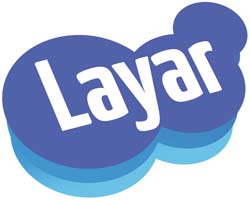Here at ReadWriteWeb, we’ve discussed the use of third party APIs when building an integrated online product, highlighting the disadvantages such a decision could entail. One topic on the flip side of that is the question of whether providing an open public API versus a closed private one is in your product’s best interest. Massively viral services like Twitter have rapidly expanded their capabilities and brand awareness by releasing an open API for third party developers to build on, but for companies in fledgeling industries, like mobile augmented reality, the API decision isn’t as clear.

Along with Mobilizy’s Wikitude World Browser, Amsterdam-based company Layar was one of the first mobile AR browsers to market and has since become one of the strongest players in the space. Layar allows users to view geo-tagged points-of-interest (POI) in a 3D “heads-up” display using their mobile phone’s camera. We’ve covered Layar’s evolution since its debut last June and eventual launch on Android devices two months later. Since then Layar has released an iPhone version of their application, but due to random crashes the company has temporarily pulled it from the App Store until they can work out the bugs.

Layar has quickly become of the most popular mobile AR browsing applications across the globe thanks to its impressive set of features, but the company’s choice to provide an open API may have been the decision which fueled them to success. Companies that wish to jump on the augmented reality bandwagon have several choices for getting their content on Layar quickly and easily. Layar provides documentation on its website for how to use and interpret their API, but those looking for an easier method of geo-data input can use any of a number of third party tools. Thanks in no small part to tools like buildAR, Muzar and Winvolve, Layar’s database of geo-data has rapidly expanded to include over 300 content layers including anything from restaurants to Twitter results, to even the locations of nearby heart defibrillators.
On the opposite end the spectrum, the accrossair browser, a similar mobile AR browser available on the iPhone, has decided to keep its API private and helps with the input of geo-data themselves for companies that wish to participate on their platform. Instead of allowing anyone to upload location data onto their platform, acrossair has reached out to corporations like McDonalds and FedEx to provide them with their own POIs in their browser. The one disadvantage this places on their product is a significantly lower number of POI sets that a user can access. With just over a dozen different options, acrossair has a fraction of the curated POI sets that Layar does. Founder Chetan Damani says that while their closed API certainly limits the amount of data on their browser, it enhances the overall stability of the browser – a factor which may play heavily for the company as they expand beyond the iPhone to Android and Symbian devices.

“We are keeping [the API] closed right now because we will be in a period of evolution and multiple iteration,” Damani told ReadWriteWeb. “We want to move to Android, and we want to make sure that the APIs are the right APIs and that they won’t limit our development. We only get one opportunity to get this right.”
Damani and acrossair are playing it safe until they are able to expand their presence to more platforms before opening their API – a step Damani says they do plan on taking. When acrossair moves their browser to Android, Symbian and possibly even Windows Mobile devices, having a closed API will make the transition much smoother. Opening the API after they set up shop on each mobile OS will be a lot easier without loads of independently developed geo-data on their system.
So is it better to limit one’s API early on for the sake of stability while simultaneously hampering the possible reach of one’s product? The acrossair browser seems to be taking that chance, while Layar, on the other hand, is welcoming third party developers with open arms. However, acrossair has one thing going for them that Layar currently doesn’t – a working iPhone application.
How much of a role Layar’s open API played in the demise of their iPhone application is unknown, but all that could be moot when Layar relaunches on the iPhone “by the end of February”. However, if augmented reality is the supposed “future of web browsing” as some believe it to be, having closed browsing platforms is not a viable long-term solution.










